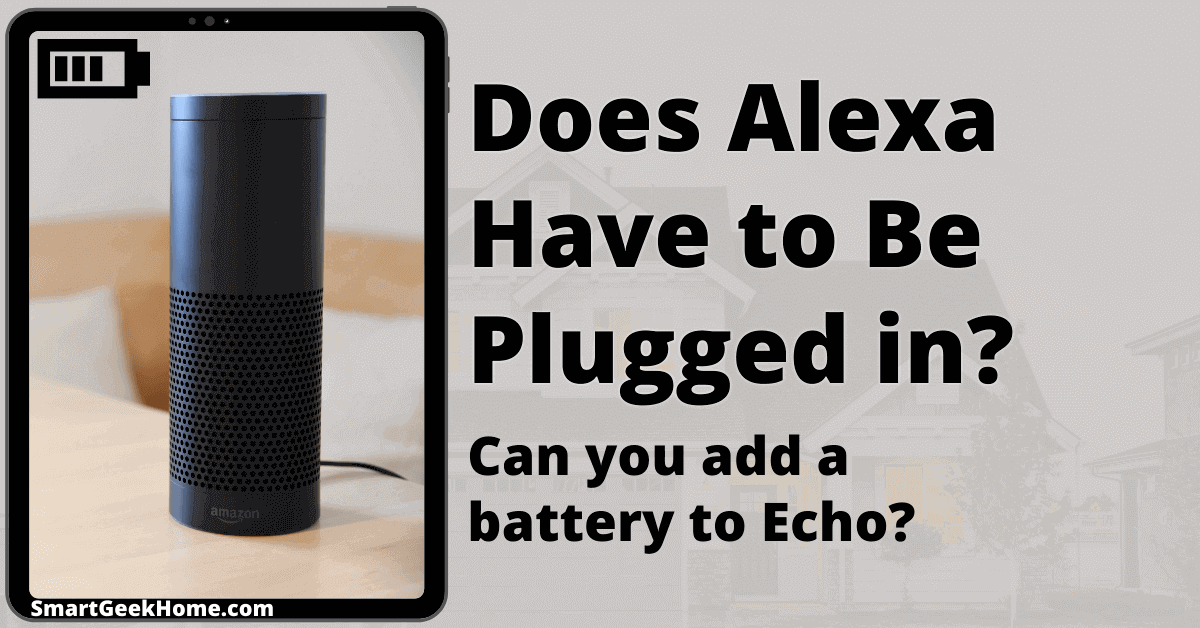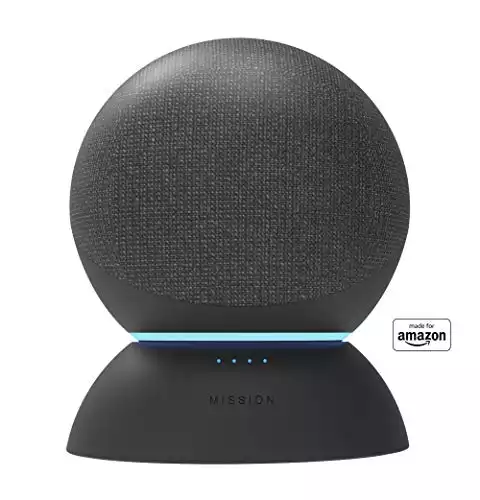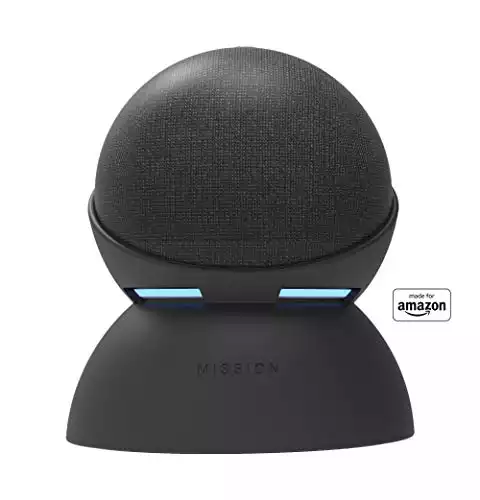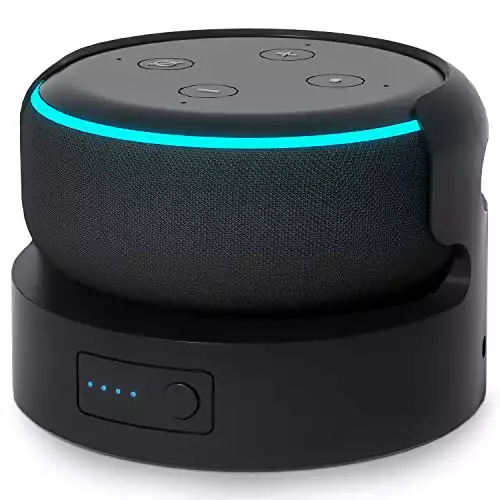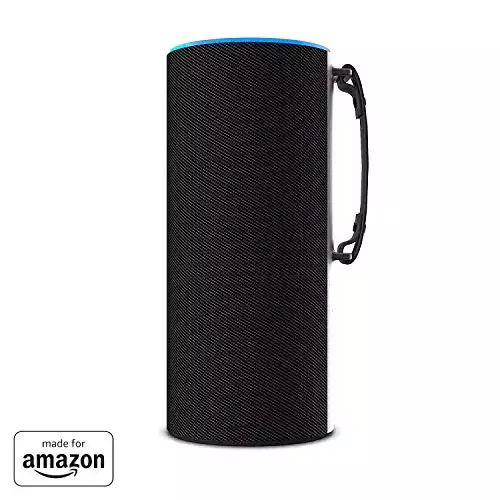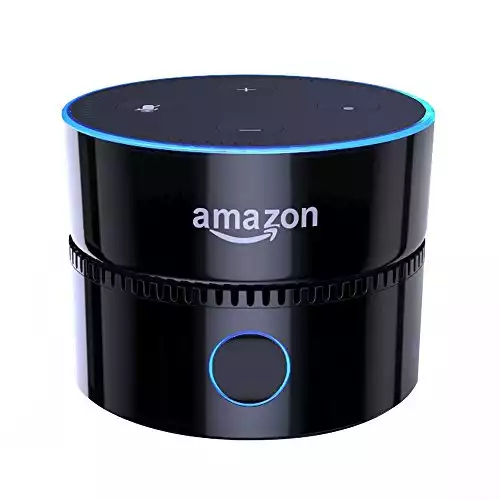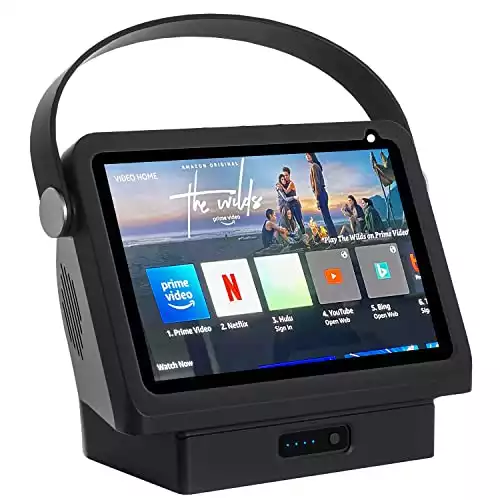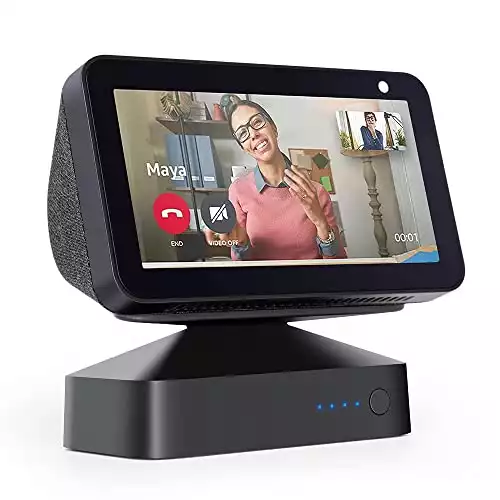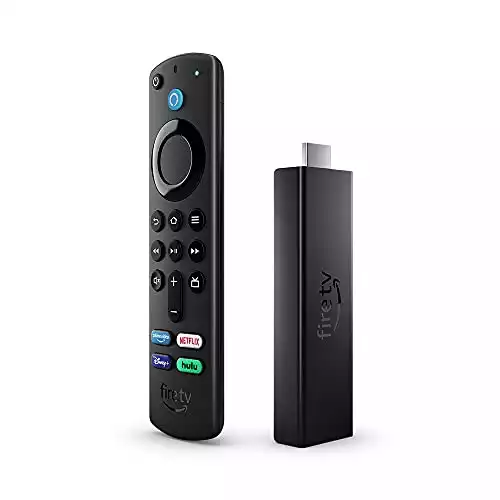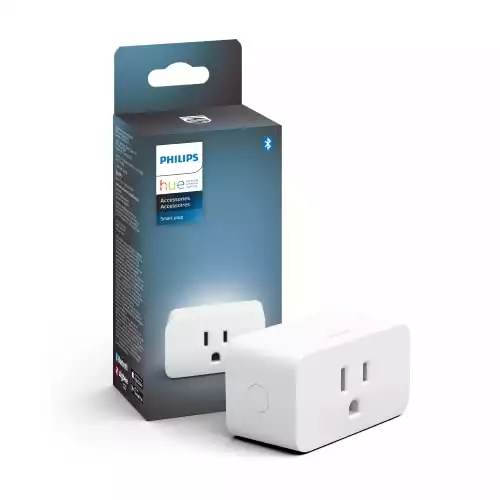This page may contain affiliate links. Please read my disclosure for more info.
Amazon’s Echo speakers pack a punch in a small package, but can you take them on the go? This article covers everything from whether Alexa needs to stay plugged in to options for powering your Echo with a battery pack.
Does Alexa Need to Be Plugged In to Work?
Alexa devices require a constant power supply from either a wall outlet or an external battery to function. If the power is cut, they’ll shut down but won’t forget your settings or data.
Portable batteries are enhancing the mobility of Echo speakers. Now, even the compact Echo Dot can operate on an external battery for up to five hours. Moreover, battery packs are available for larger models such as the Echo, Echo Show 5, and Echo Show 8, making it easier to keep your device powered on-the-go.
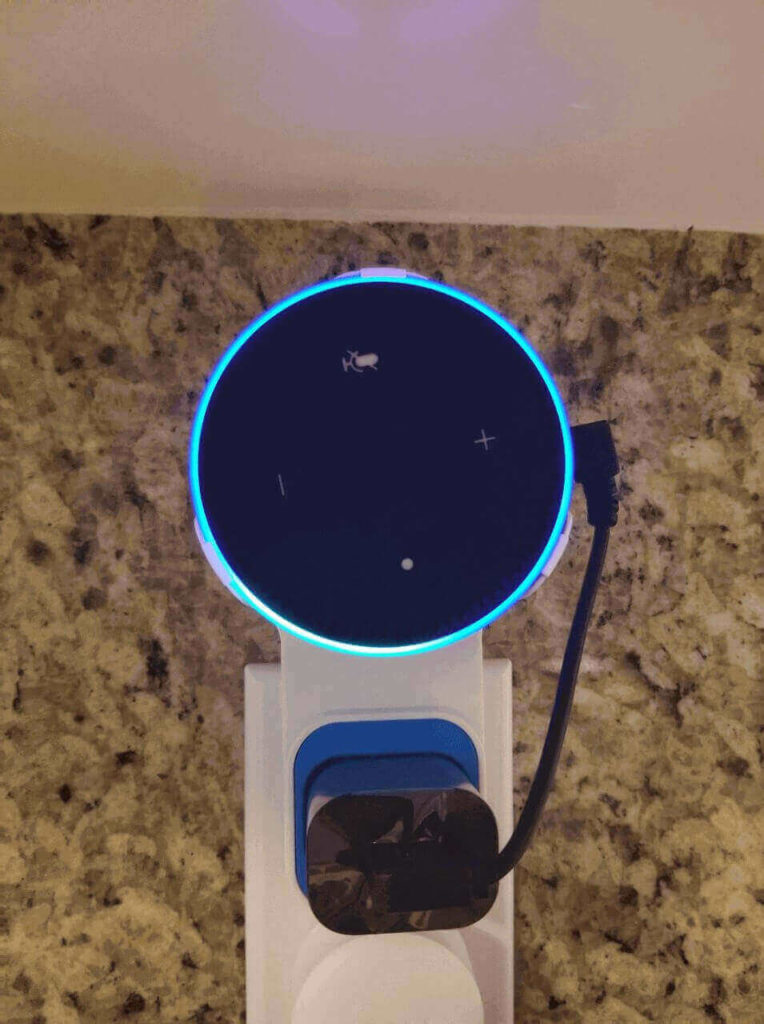
Does Alexa Have a Battery?
Amazon’s Alexa gadgets don’t come with their own batteries, so they’ll stop working if there’s a power cut. But, you can get external battery packs for many Echo models to keep them running.
Despite their size, many Echo devices skip internal batteries to focus on what really matters: stronger processing abilities and superior sound. This choice sets them apart, especially when you consider the impressive sound quality of rivals like the Sonos One. This strategic decision by Amazon seems wise. However, it’s worth noting that Amazon’s venture into a battery-powered Echo, known as the Tap, didn’t quite hit the mark. More on that to come.
If I Unplug Alexa Will It Reset?
Unplugging your Alexa device won’t erase your data or settings. Just like turning off a smartphone or computer, your Amazon Echo will simply power down and retain all your information when it loses electricity.
When your device is off, it can’t take new commands or send notifications. However, your alarms and timers remain active in the Alexa app, allowing you to keep an eye on them without needing the device on.
When the power returns, Alexa swiftly resumes its duties following a quick startup. Expect to catch up on any alarms, timers, or notifications you missed – your device will alert you with beeps. Typically, you don’t need to do anything to restart Alexa after a power cut. However, if you encounter any issues, explore my troubleshooting tips for when Alexa isn’t responding.
Can You Buy a Battery Pack for Alexa?
Echo battery packs are a game-changer for almost all Alexa gadgets, offering an affordable way to keep them powered up without breaking the bank. But, with each Echo model and generation sporting unique dimensions, finding the right fit can be tricky. Each accessory typically matches just one Echo variant. To help you navigate this, I’ve put together a straightforward table of my top picks right here: [Link to table].
| Compatible Echo Models | Product Image | Product Name / Price | Buy Now |
|---|---|---|---|
|
|||
|
|||
|
|||
|
|||
|
|||
|
|||
|
Does Alexa Need Wi-Fi?
To use Alexa’s features fully, connecting it to Wi-Fi is essential, even if it’s battery-powered. Most Alexa models can’t process voice commands without an internet connection.
Currently, if you’re looking for Alexa gadgets that can process voice commands without an internet connection, your options are limited to the 4th-gen Echo, the 3rd-gen Echo Show 10, and the soon-to-arrive Echo Show 15. This feature of handling commands locally is quite fresh and promises to make these devices more useful even when they’re offline. However, it’s important to remember that downloading new abilities or using features that need internet won’t work without a connection.
Some Alexa features don’t need Wi-Fi to work. For example, you can turn Alexa into a Bluetooth speaker once it’s set up with Wi-Fi. Also, any alarms or timers you’ve already set will still go off, but setting new ones requires an internet connection.
Can You Take Echo Dot Anywhere?
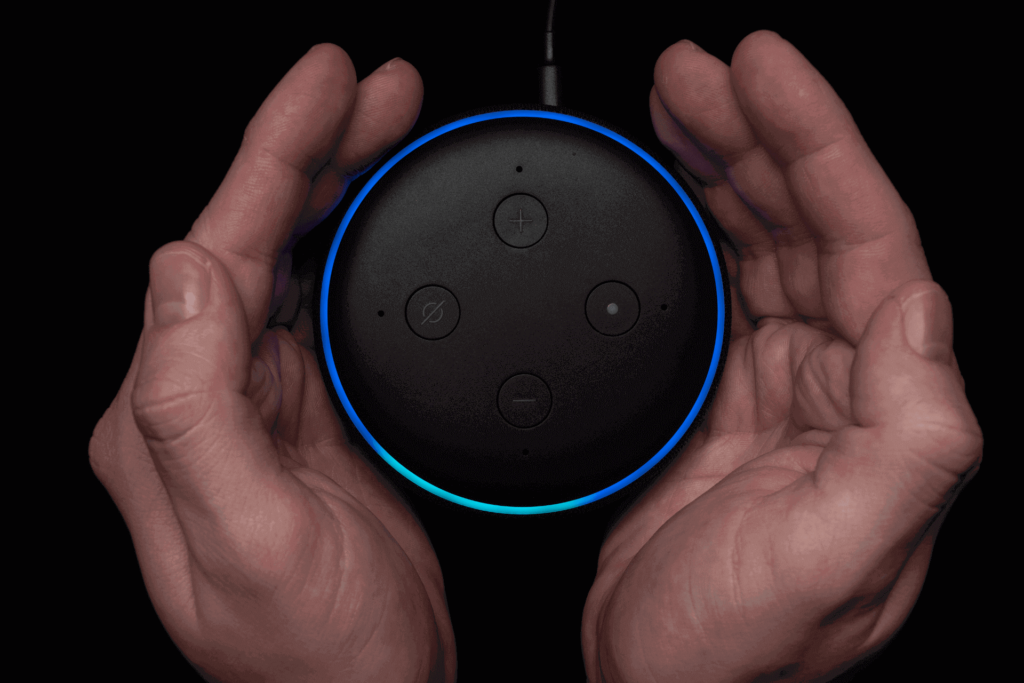
Despite its compact design, the Echo Dot faces the same challenges as other Amazon Echo devices, making its portability less impressive.
The Echo Dot, like its Echo siblings, needs plugging in to function. Taking it on the go? Ensure you have access to an outlet or carry a battery pack. It primarily relies on Wi-Fi for its features, but in a pinch, you can tether it to your mobile phone’s hotspot for connectivity.
Despite its battery pack, the Echo Dot remains incredibly portable. The Mission Portable Base, my top pick, bulks up the 4th-generation Echo Dot to approximately 5.3 inches in diameter and 5.8 inches in height. This is roughly equivalent to the standard 4th-generation Echo’s size. However, with the Mission addition, the Dot boasts a solid five hours of battery life before needing a recharge.
What About the Echo Tap?
In 2016, Amazon introduced the Amazon Tap, a mobile Alexa gadget that didn’t last long. Customers were let down by its scant features, notably its lack of hands-free voice control—a key feature in Echo devices. This oversight led to its quick discontinuation.
Looking for an Echo Tap? They’re getting hard to find, even refurbished ones. Honestly, skipping it might be for the best. It was essentially just a fancy Bluetooth speaker, and the market has much better options now. Consider pairing an Echo Dot with a battery pack instead; it offers all the perks the Tap missed out on, delivering a more satisfying tech experience.
What’s next?
Smart home gadgets need continuous power and Wi-Fi. While battery packs and offline voice commands can keep them running briefly without internet, they still lack full mobility.
Exploring a robust offline smart home setup? You’re not alone. I’m delving into setting up Home Assistant on a Raspberry Pi powered by a battery pack. This approach could be a game-changer during power outages, maintaining functionality without needing constant power, except for Wi-Fi-dependent devices. However, I’m on the hunt for alternatives for my smart plug applications, which won’t work without electricity.
Got ideas for smarter, more portable smart home tech or ways to keep them running during power outages? Share your thoughts in the comments.
|
N/A
|
$34.99
|
$49.99
|

Zachary has spent 12 hears in the tech industry focusing on automation, analytics, and cybersecurity. His passion is tech education; he uses his industry expertise and STEM PhD to break down complicated concepts into simple step-by-step guides. When he’s not writing or coding, you can find him binging anything Star Trek or Marvel or reading far too many sci-fi novels.
